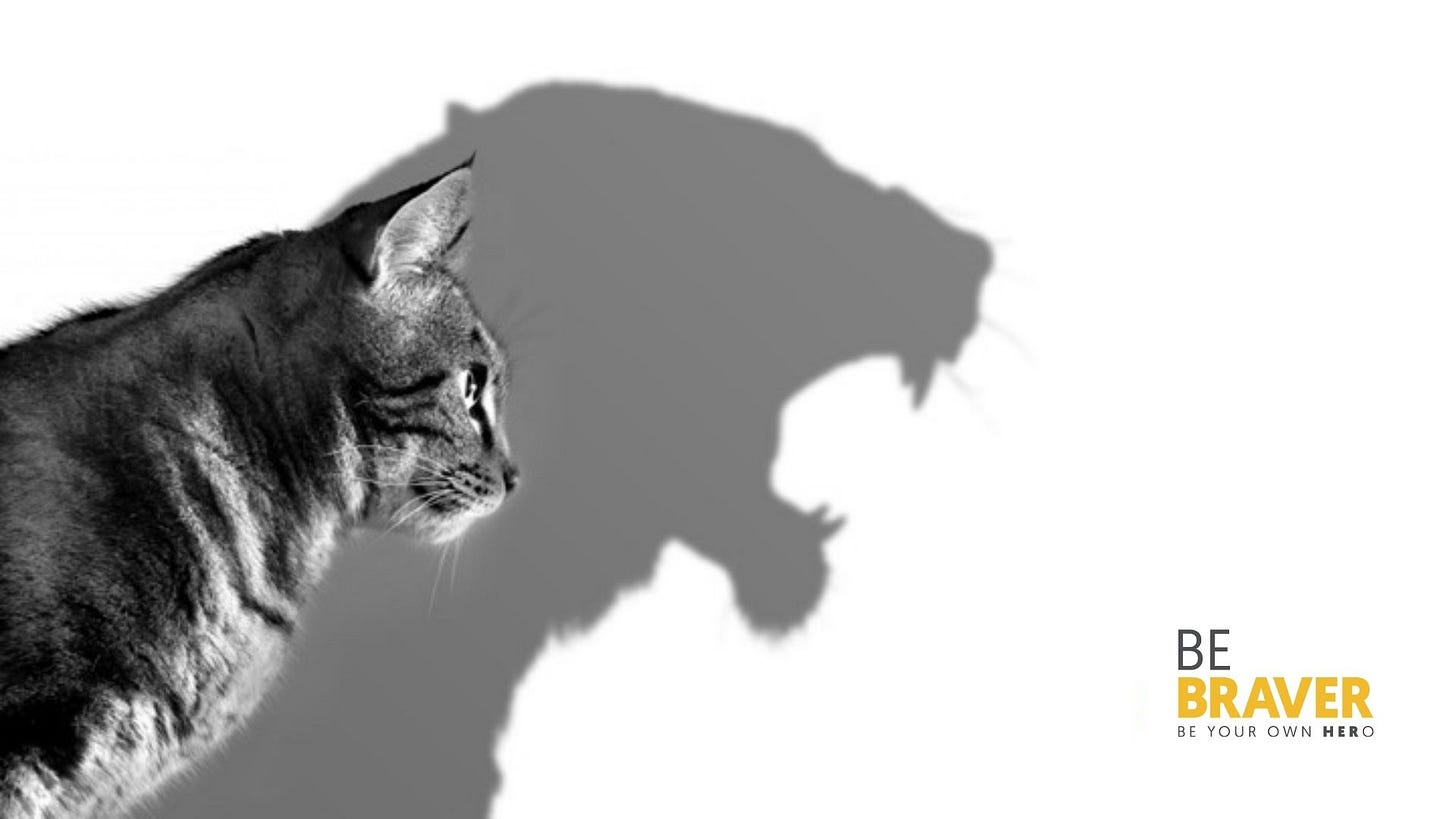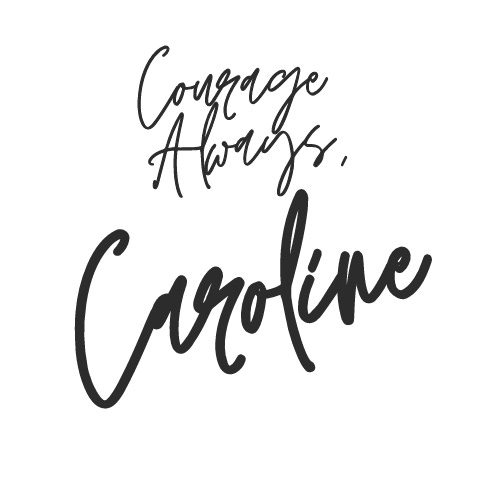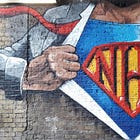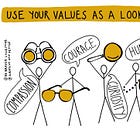Thinking Outloud #14: The Flat-Pack Philosophy of Leadership Courage

What struck me most about hearing Gillian Drakeford MBE speak wasn't her impressive track record as former CEO of IKEA UK & Ireland, or even her role leading IKEA's expansion in China. It was how she embodied IKEA's core philosophy in her leadership approach.
Just as IKEA democratised good design by making it accessible and functional, Gillian democratised leadership courage. She stripped away the unnecessary complexity - the dramatic gestures, the heroic narratives - and revealed the essential components: curiosity, values alignment, inclusive thinking, and patient transformation.
At a moment when many leaders confuse courage with boldness or risk-taking, Gillian showed us something profound: real leadership courage, like IKEA furniture, is about smart design and thoughtful assembly. It's not about doing scary things—it's about doing the right things, even when they're uncomfortable or challenge our deepest assumptions.
Speaking at the same event, business Psychologist Sarah Clarke suggested we're experiencing a crisis of transformational leadership. Ask executives how many truly transformational leaders they've met and you'll rarely hear numbers in double digits. We've been trying to build leadership from the wrong guide manual.
The Essential Components
Like IKEA's approach to furniture design, Gillian's leadership courage came down to essential, functional components that anyone could assemble. Her most courageous acts weren't dramatic gestures - they were practical applications of core principles:
The courage of curiosity over assumptions. Instead of assuming she knew what Chinese consumers wanted, she spent years doing thousands of home visits, asking questions, genuinely trying to understand different perspectives. This wasn't scary - it was uncomfortable because it challenged her expertise and required admitting what she didn't know.
Values as functional design. When she returned to lead IKEA UK, she found an organisation where people were seen as "a resource and cost" rather than human beings. Rather than accepting this, she applied IKEA's democratic design principles to leadership itself: how do we make good treatment of people accessible, functional, and sustainable? She took IKEA UK through real living wage accreditation - not because it was dramatic, but because it was good design. They became the only accredited retailer in the UK, proving that values-driven decisions create competitive advantage.
The courage of inclusive leadership. Rather than making top-down decisions, she consistently sought "different perspectives around what we were doing" because she understood her own experience had limitations. She changed her entire approach to meetings and decision-making - not to take careless risks, but to achieve genuine cultural understanding.
Why the "Heroic Leader" Model Is Bad Design
The traditional view of courage - doing things that scare you - is like trying to build furniture without an guide manual. It looks impressive but misses critical stages and risks being overconfident.
It's over-engineered. Complex heroic narratives obscure the simple, functional components that actually drive change.
It's not accessible. When courage requires individual heroics, most people can't afford it -just like expensive, complicated furniture.
It doesn't scale. Heroic moments are one-offs. Real organisational transformation, like IKEA's global expansion, requires systems that work consistently across cultures and contexts.
The flat-pack approach to courage is different: break it down into essential components that anyone can assemble, anywhere.
The Flat-Pack Leadership Kit: Four Essential Components
Like IKEA's democratic design principles - good form, function, and quality at a price people can afford – courageous leaders who inspire teams to Be Braver in their performance access 4 components:
1. Curiosity (The Allen Key) The simple tool that makes everything else work. Courageous leaders ask: "What assumptions am I making? How can I understand this from someone else's perspective?" This isn't complicated - it's the essential connector that holds everything together.
2. Perspective-Taking (The Frame) Just as IKEA designs for different homes worldwide, courageous leaders understand that everyone sees challenges from their unique vantage point. They don't assume their view is complete -they actively seek to understand how others see the situation.
3. Values-Driven Action (The Foundation) IKEA's entire business model rests on democratic design - making good design accessible to many people. Similarly, courageous leaders align actions with stated values, even when it requires difficult conversations. It's not about conquering fear - it's about structural integrity.
4. Patient Assembly (The Process) Anyone who's built IKEA furniture knows: rushing leads to wobbly results. Sustainable change comes from following the guides -consistent, values-aligned actions over time.
Assembly Guides for Organisations
Just as IKEA revolutionised furniture by making good design accessible to everyone, organisations can democratise courageous leadership:
Start with shared values. IKEA's practice of beginning with democratic design principles, regardless of location or culture, created a foundation for courageous leadership at every level. Your organisational values should be as clear and functional as an guide manual.
Make curiosity affordable. The most courageous question costs nothing: "What assumptions am I making that might be wrong?" Reward leaders who ask this regularly.
Design for inclusion. Track how often leaders seek different perspectives—not just how often they make "brave" decisions. Good design considers all users.
Build for durability. Recognise leaders who achieve sustainable change over time, not just those who create dramatic moments. Strong furniture lasts because of good engineering, not flashy materials.
Good Design for Everyone
We can continue pursuing the custom-built, expensive version of courage that looks impressive but few can afford. Or we can embrace IKEA's approach: smart design that works for everyone.
Gillian Drakeford proved that leadership courage is not about overcoming fear—it's about choosing growth over comfort, understanding over assumption, and purpose over politics.
The world needs leaders who understand that the most elegant solutions are often the simplest ones. True courage isn't heroic - it's democratic. It's accessible, functional, and built to last.
The most courageous leaders aren't the ones who never feel uncertain - they're the ones who follow the guide anyway.
Questions For the Courageous
Ready To Lead With Impact?
Don’t just read about courageous leadership - practice it.
The Be Braver programme starts this September and is designed exclusively for women in data, communications, and technology. You’ll join a peer group of ambitious leaders to build the mindset, visibility, and influence needed to lead with authority.
What you’ll gain:
Practical leadership tools, models and frameworks you can apply immediately to yourself and your team
Peer-group accountability with like-minded women facing similar leadership challenges
Real-world sticky learning to help you speak up, take space, and drive change confidently
Strategies to grow your visibility and lead with presence - without waiting for permission
Expert guidance on leading high-performing teams in complex, fast-paced environments
Join us this September. Lead smarter. Be seen. Be braver.
I work with organisations and teams, mostly new and emerging leaders, to help them understand what courage looks like in practice. My approach blends research, psychology, and lived experience into practical frameworks leaders can use in moments that matter: high-stakes conversations, major transitions, values-based decisions, and deep uncertainty.
I also work privately with individuals and love collaborating with others who are passionate about reshaping leadership, equity, and well-being. I’m especially interested in funding and partnerships that support sustainable, long-term impact for young people and marginalised communities, those who often need courage the most, but are resourced the least.











